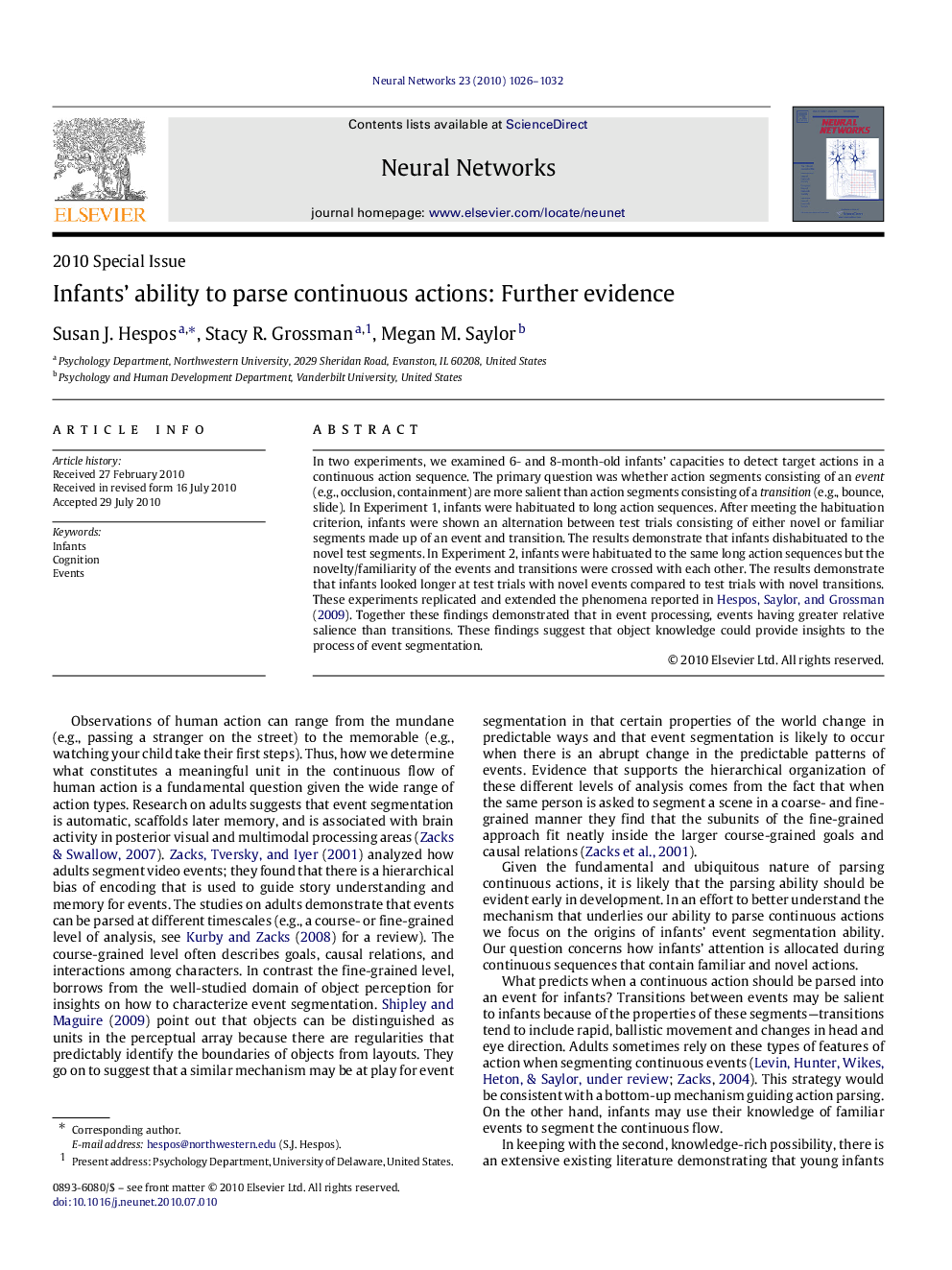| Article ID | Journal | Published Year | Pages | File Type |
|---|---|---|---|---|
| 404429 | Neural Networks | 2010 | 7 Pages |
In two experiments, we examined 6- and 8-month-old infants’ capacities to detect target actions in a continuous action sequence. The primary question was whether action segments consisting of an event (e.g., occlusion, containment) are more salient than action segments consisting of a transition (e.g., bounce, slide). In Experiment 1, infants were habituated to long action sequences. After meeting the habituation criterion, infants were shown an alternation between test trials consisting of either novel or familiar segments made up of an event and transition. The results demonstrate that infants dishabituated to the novel test segments. In Experiment 2, infants were habituated to the same long action sequences but the novelty/familiarity of the events and transitions were crossed with each other. The results demonstrate that infants looked longer at test trials with novel events compared to test trials with novel transitions. These experiments replicated and extended the phenomena reported in Hespos, Saylor, and Grossman (2009). Together these findings demonstrated that in event processing, events having greater relative salience than transitions. These findings suggest that object knowledge could provide insights to the process of event segmentation.
